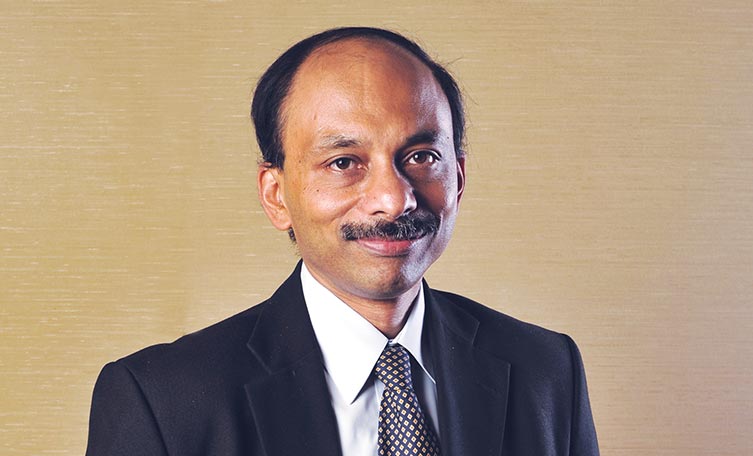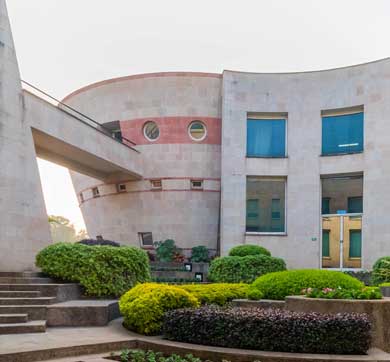January 2024 | K Ananth Krishnan | 1115 words | 4-minute read
I was very tempted to let a generative artificial intelligence (GenAI) bot write this article. I decided to check out ChatGPT, which has captured popular imagination and is making GenAI a household word. It said, “As an AI language model I don’t have real time access to the thoughts and opinions of specific individuals, such as TCS CTO K Ananth Krishnan. …” (Phew! Thank god for that!) It continued, “To understand [his] specific thoughts on generative AI, I would recommend referring to his public statements, interviews or articles published after my knowledge cut-off date (September 2021).”
When I removed my name and asked it: “What would a Chief Technology Officer say about generative AI?”, it gave me a list of GenAI features a CTO may comment on, ranging from greater automation, efficiency, better customer experience and integration with enterprise applications, but also some of its limitations.
That in a nutshell gives the highs and lows of GenAI. It answered my question in lucid English as any intelligent human would have! It did so by processing vast volumes of information fed to it (in this case, all the information in the public domain up until September 2021). It synthesised this ocean of information to generate, in its own words, a very specific answer in seconds. On the other hand, it was limited by the data it used, and there is no way of knowing if all the data on the internet is true or without bias; it had to understand the model (here, it knows ‘CTO’ better than Ananth Krishnan); and it gave no idea where it took this information from and if it had violated some content creator’s copyright.
GenAI – a tech tweet
“Machines take me by surprise with great frequency,” said Alan Turing, who seeded the idea of AI. The blossoming of GenAI is one such moment for technologists in the history of machines. To explain why, here is a tweet-sized tech lesson: GenAI is a branch of AI that aims to generate content such as text, images, and even music through deep learning algorithms. The system is trained to understand patterns and generates new content. So now you have GenAI systems that write poems, create art, write code, do analytics, predict trends, converse with humans and even create new products. The leap came when large language models used ‘transformers’, an architecture that leverages extremely dense deep learning neural networks, designed and optimised in a particular way.

What can it do for you?
Every enterprise can leverage GenAI for its domain and operations. Here is a list of possibilities for group companies in different industries.
- Manufacturing: Address unique challenges and opportunities to improve supply chain efficiency, reduce production costs, and increase product quality.
- Consumer services: Enhance customer experience, improve marketing effectiveness, and increase brand loyalty.
- Financial services: Improve risk management, enhance customer service, and increase operational efficiency.
- Aviation: Optimise flight scheduling, passenger safety, and ticket pricing.
For employees and consumers, it is good to be familiar with new technology. Try out GenAI tools in your area of interest: writing, analysis, coding, music or art. But remember, they may be flawed and may violate ethics and copyright. Do not use the outcomes in public or professional spaces without completely proofing it for these issues.
Curiouser and curiouser
Machines were supposed to do drudge work and leave creativity to humans. Now machines are exhibiting prodigious ‘creativity’. Observes my colleague Gautam Shroff, Vice President, Chief Scientist and Head - TCS Research, “GenAI can now take our thoughts in key words and craft an impressive essay, lowering the value of human wordsmithing.” He adds, in a light-hearted manner, “There is still a window for us humans until GenAI begins to think originally. Meanwhile, the bar for thinking is on the rise!”
So, what’s ahead for businesses?
I cannot but think of what Turing said about predicting the technology future. “We can only see a short distance ahead, but we can see plenty there that needs to be done.”
“There is a feeling that GenAI has ‘arrived’. However, I feel that this is the beginning!” Sankaranarayanan Viswanathan, Vice President, Chief Technology Officer and Head - Business Solutions, TCS, tells me. “GenAI has the potential to become the foundational technology to create a knowledge superstructure within an enterprise. It can ‘capture’ knowledge, including tacit knowledge, from diverse sources, harmonise it and make it available as a capability. This enables the organisation to completely reimagine its ways of working, business models, customer engagement and products of the future.”
Meanwhile, the work we have on hand is taking GenAI out of the lab. While GenAI bots are wowing the general public, there are enough memes about their horrific gaffes that can prove grave in real-life situations.
Preparing for GenAI
Here are some next steps for every organisation.
- Identify the business case for adopting a large language model and the specific use case for fine-tuning the model.
- Assess the availability and quality of the data sources needed to train and fine-tune the model.
- Evaluate the model’s performance on relevant benchmarks and evaluation metrics.
- Assess the resources required to adopt and fine-tune the model, including hardware, software, and personnel.
- Consider ethical and responsible use concerns, including issues related to fairness, privacy, and security.
- Assess the impact of adopting and fine-tuning the model on stakeholders, including users, customers and partners.
- Identify potential risks associated with the use of the model, such as bias or unintended consequences, and develop mitigation strategies to address the risks.
- Evaluate the costs and benefits associated with adopting and fine-tuning the model, including both short-term and long-term considerations.
- Evaluate the licensing and intellectual property implications of adopting and fine-tuning the model.
Once you have done these, you will need to have an implementation plan and ongoing monitoring, retraining and evaluation system.
A foundation of trust
Harrick Vin, the incoming Chief Technology Officer of TCS, puts it in a nutshell. “The promise of GenAI is how it can drive predictive and prescriptive intelligence-based actions and outcomes for enterprises. However, new guardrails must be put in place to make GenAI consistent and truthful,” he says. These should safeguard against security breaches, compliance violations, and ethical concerns. These guardrails serve as guidelines to shape the behaviour of the models, allowing organisations to build generative capabilities on a foundation of trust.
As usual, Harrick sums it up pretty well. Let’s see how things evolve!
K Ananth Krishnan is the former Executive Vice President and Chief Technology Officer, Tata Consultancy Services













